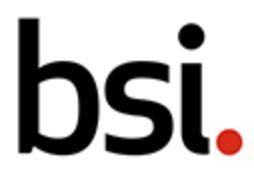Please be advised that a New Work Item Proposal has been loaded to the BSI Standards Development Portal for comment.
Any comments received will be submitted to the national committee AMT/10 “Robotics ” for consideration when deciding the UK response to the associated Standards Development Organisation.
Proposal: Robotics — Legged Robots — Testing procedures for legged robots in industrial environments
Please visit ISO/NP 21196
Comment period end date: 09/05/2023
Scope
Mobile robots using legs as the main means of locomotion. Testing procedures with specific reference to industrial environments and conditions of significance concerning walking locomotion.
Exclusions:
• Legged robots for the transport of people
• Other applications of legged robots for direct physical interaction with people
• Safety requirements
• Water and airborne variants
Purpose
Market Need:
Legged robots are a subclass of mobile robots. Although still a relatively novel form of locomotion, legged robots are already being used in very diverse applications. This market is experiencing rapid growth and large projected forecasts for sales and implementation during what is becoming an historic global era of labor shortages and industrial automation.
The key distinction for legged robots is their ability to be agile in a variety of terrain and surface conditions. Locomotion capabilities must be accurately assessed for evaluating the suitability of robots for given applications or environments.
Problem Addressed:
• Locomotion with legs is a complex capability that depends on the conditions of the environment. No assessment about robot abilities can be accurate and fair if the conditions of task execution are not completely defined.
• Locomotion with legs cannot re-use or adopt the same mobility assessment methods that are used for ground wheeled robots. For instance, a legged robot climbs over, crosses over, or even moves through environmental obstacles, unlike a wheeled robot.
• Comparison and benchmarking are difficult, if not impossible or unfair, if the full context of a task execution is not specified, including success criteria. Individual performances (e.g. speed) are meaningless if expressed alone.
Value to End-users:
Commercial end users of these robots will have globally valid, repeatable and objective elements for their evaluation of platforms and suitability for reference model applications.
Policymakers, third-party assessment agencies, and research institutions will have standardized test routines representative of realistic conditions to reference when considering behaviors or capabilities of robots. This will avoid confusion or mystification of legged robot capability during any institutional process (regulation, validation, research).
If you have any comment or need more information, please contact Sami Ortiz at [email protected]

